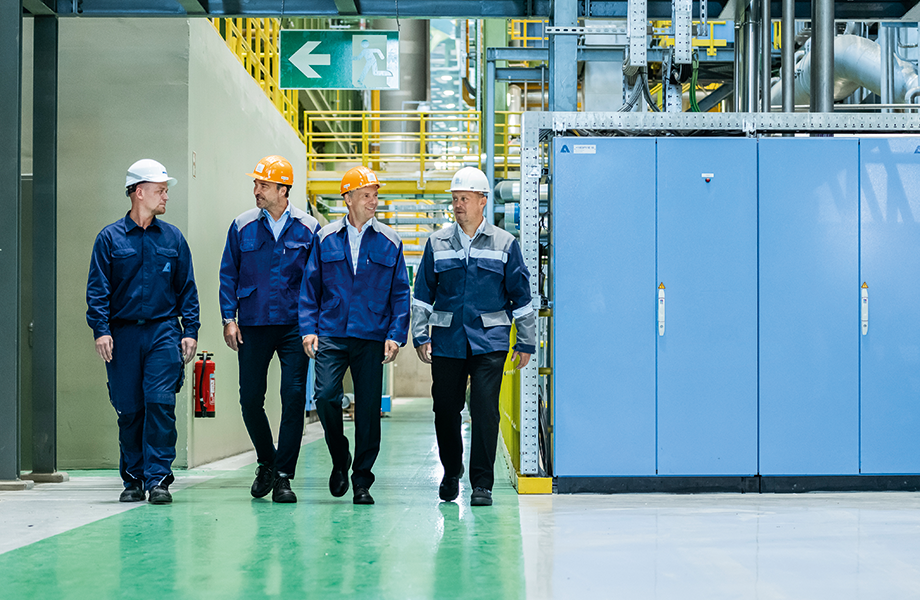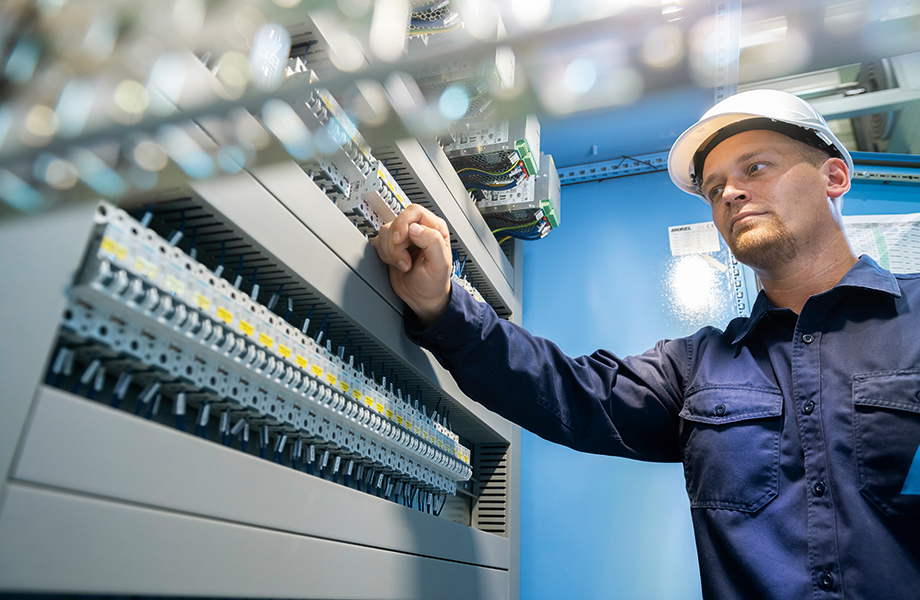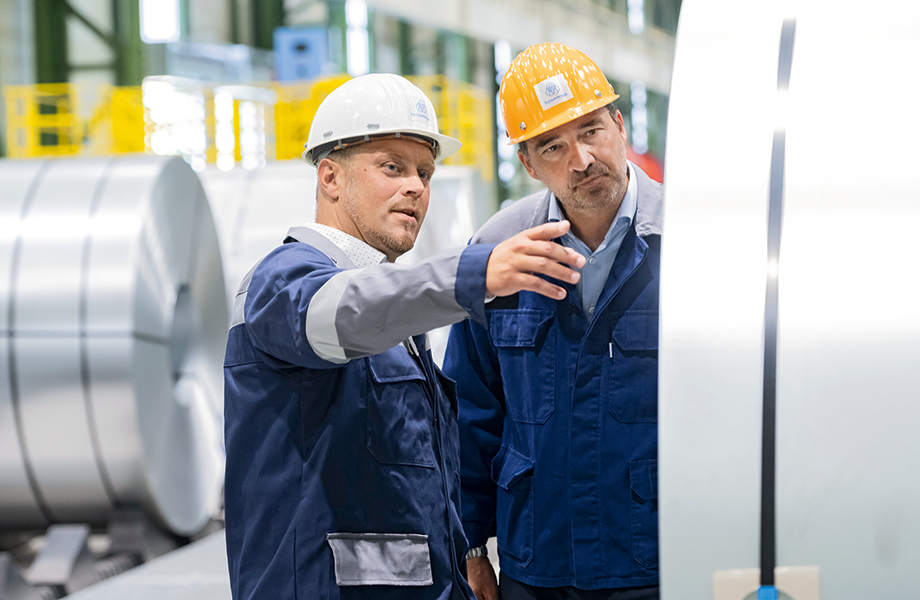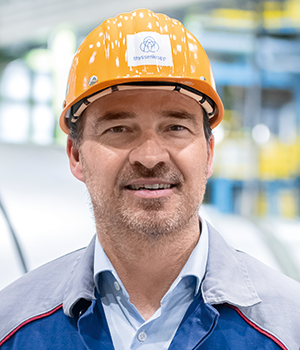Text Markus Huneke ––– Photography
It’s what’s on the inside that counts. Fitted out with control and automation technology by Austrian technology group Andritz, the enclosures form the complex “nervous system” of the galvanising line – without these internal fittings, the 250 million euro investment would essentially be a lifeless steel structure. The process that leads to the finished galvanising line provides an illustration of how industry is strengthening its technical position by combining innovations from different areas in its approach.
ACCOMPANYING PROCESSES ARE DRIVING VALUE CREATION
The new galvanising line shows that steel is a high-tech product nowadays and that a huge amount of research and development work goes into it. However, this expertise is not restricted to the material itself. For a long time now, the associated processes – from logistics to finishing – have also been driving value creation. In particular, digitalisation and the new data spaces that go with it have been adding a great deal of momentum to the development of industrial ecosystems. While, in terms of technology, Germany has by and large been lagging behind on the B2C markets, which are dominated by top dogs such as Amazon, German-speaking companies in the industrial sector are often global leaders – and are showing how the challenges of our times, such as digitalisation, the green transformation and the skills shortage, can be addressed successfully.
INDUSTRIAL PRODUCTION WITH POTENTIAL
The FBA 10 control system provides proof not only of industrial performance capability, but also of the potential offered by industrial collaboration. That’s because, in order to build functional and robust enclosures out of galvanised steel – steel that was, of course, produced by thyssenkrupp Steel – to house the sensitive circuits, the steel coils passed through a highly specialised network in which the individual participants worked hand in hand.
The first step centred around precision when cutting the steel to size. At Stahlo, part of the Friedhelm Loh Group and one of the biggest independent steel service centres in Germany, the raw material was cut into precisely dimensioned blanks for further processing. “As specialists in material usage, we are the link between steel producers and steel processing companies, and we bring resources, people and technologies together efficiently,” explains CEO Oliver Sonst. He is keen to prospectively develop the steel service centre as a green steel provider and has already entered into an agreement with thyssenkrupp Steel regarding supplies of CO2-reduced bluemint® steel. The next step – reshaping the blanks to create the frames and enclosure parts needed – was carried out by Rittal.
ADVANTAGE OF A DIGITAL TWIN
Use of the popular Eplan software tools – which Andritz used in the design process right from the outset – showed the advantages that the combined hardware and software expertise of the Friedhelm Loh Group offered for this complex project. During the digital engineering process, a digital twin is created, with all the relevant information relating to the future galvanising line. When all the different trades involved can work with this digital twin via a shared data space, this significantly speeds up steps such as fitting out and wiring the enclosures – which is a huge benefit, especially in view of the growing skills shortage.
In the last step in the process, the steel enclosures, which were now built but still empty, were transported to Austria, home to international technology group Andritz. Once there, the requisite “intelligence” was finally added in to the complete system. As part of its overall delivery of the FBA 10, Andritz delivered the finished enclosures to thyssenkrupp Steel and started up operations, thus completing the short value creation cycle.
To overcome the challenges associated with the industrial site, clear insights are therefore also needed. In the context of smart production and digital twins, one such insight is undoubtedly: “It all comes down to the (eco)system.”



